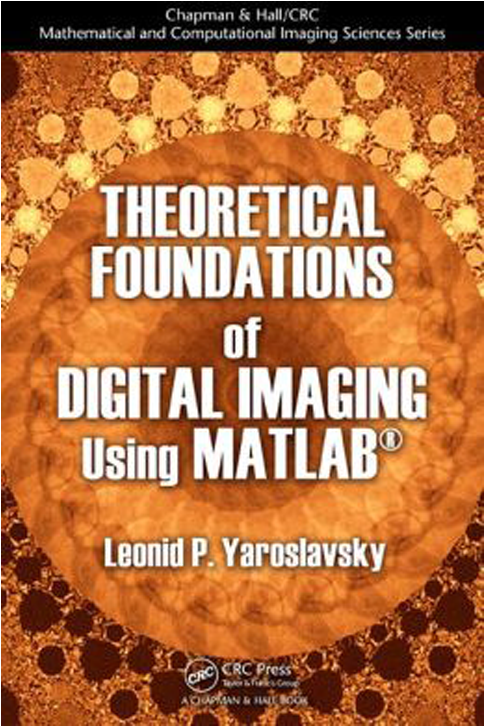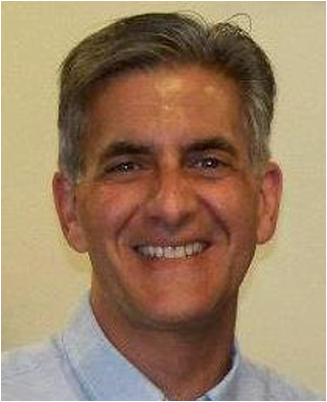|
|
 Leonid P. Yaroslavsky, 493 pp., ISBN 13: 978-1-4398-6140-0, CRC Press, 2013, $89.96 hardcover. Reviewed by Louis J. Beato, Kodak Alaris Company, Document Imaging, Rochester, New York. The book consists of 8 chapters and begins with mathematical preliminaries (Chapter 2), which gives the reader the necessary background for the book. The author assumes that the reader has sufficient mathematical and signal processing background to follow the equations and proofs. The MATLAB code has sufficient comments for the function headers, but the comments are somewhat lacking in the actual function bodies. The book itself does not contain any MATLAB software instructions. It should be noted that all of the MATLAB .m files that are referenced in the preface direct the reader to go to the book’s webpage on the CRC Press website, http://www.crcpress.com/product/ISBN/9781439861400, to download the appropriate files. The author is experienced in the area of mathematics and signal processing. A fellow of the Optical Society of America, Dr. Yaroslavsky is currently a professor at the Faculty of Engineering at Tel Aviv University. He is an author and editor of several books and has authored more than 100 papers on digital image processing and digital holography. Chapter 3 begins with image digitization, which is the process of converting analog images to digital. It starts with basic principles such as signal discretization and discusses the use of basis functions to model the conversion process. The section discusses sampling of one-, two-, and multi-dimensional signals. Both quantitative and qualitative analyses of sampling artifacts are discussed, as are the basics of image compression, which include entropy and symbol encoding in the context of various image compression methods. Chapter 4 covers discrete signal transformations. It describes the discrete representation of the convolution integral and the handling of signal borders. It studies the discrete representation of the Fourier integral transformation, presents a detailed description of the mathematics of the two-dimensional discrete Fourier transform (DFT) and provides an excellent coverage of the principles of fast Fourier transforms (FFT). Other transforms, such as Walsh-Hadamard and wavelets are also discussed in detail. Chapter 5 addresses digital image formation and computational imaging. It starts with methods of image and signal recovery from sparsely sample data. An application example concerning image superresolution from multiple differently sampled video frames is used to demonstrate signal recovery techniques. Several discussions and examples of 3D and hologram reconstruction are also included, which happens to be an area of expertise of the author. Chapter 6 describes the important topic of image interpolation and building continuous image models. An interesting discussion on signal interpolation (zooming-in) by means of DFT or DCT spectra zero padding includes several image examples showing the differences in the two techniques. Image zooming and rotation using scaled and rotated DFTs also contain image examples to visually show the technique. The examples show the intermediate images of each pass of the algorithm. Chapter 7 describes pattern recognition principles using feature detection with the example of recognizing objects in images. A correlator and the target object signal are used to locate a target object in an image. The case of target object pattern recognition in the presence of additive nonwhite Gaussian noise is then discussed. Several other examples of pattern recognition are also given using different correlators. The last chapter (Chapter 8) is titled “Image Perfecting,” which is primarily described as image restoration and image enhancement. Image restoration is the process of correcting the distortions that might occur during the image capture process. Typical examples of such distortions are image blur and noise. Image enhancement is the process of modifying an image such that the modified image is more useful for a given task. This might include enhancing the contrast, reducing the noise, or sharpening an image to improve its visual quality. In order to demonstrate that image-perfecting techniques are not limited to just photographs, several examples using a text document are also employed. This book is geared toward graduate level students as well as engineers and scientists working in industry that are looking for the mathematical background that underlies many digital signal processing problems. An advanced background in college mathematics and access to MATLAB (or perhaps an Open Source alternative, such as Gnu OCTAVE) should be sufficient to understand and apply the formulas described in this book. The book could also serve as a background point for people working in image processing who have a working knowledge of MATLAB. Finally, this book can also be used by scientists who are new to digital image processing but have sufficient mathematical background to understand the equations that underlie the signal processing concepts. The book could also be used as the textbook for an advanced undergraduate or traditional graduate class in imaging systems and signal processing. A good addition to the book would be a website containing support material for a class and a set of problems/questions at the end of each chapter. Although the book references the specific .m files to reinforce the concepts discussed in each chapter, including them in the book would considerably enhance its readability. Also, I believe that more comments should be included in the actual functions in the code so that the user can follow the operation of the invoked MATLAB functions. The book would additionally benefit from code fragments embedded in the body of the text so that the reader can use the book as a cross reference for the concepts and the associated MATLAB functions. Finally, the book could benefit from more color photo examples. The few color photos currently included in the book fall short of covering the range of topics that would be better understood with color information. In summary, this book could serve as a graduate level reference book for students in the field of image and signal processing who need a more fundamental understanding of the mathematical concepts in this scientific area. The author is thorough in his proofs, and the examples are practical and useful. Since the book does not contain actual MATLAB code in the text, it would not be a book I would recommend as a practical MATLAB reference book. It is better suited as a reference textbook for the mathematical principles that are the basis for the introduced concepts. The MATLAB .m files are available on the CRC Press website as previously mentioned, so the extra step of downloading and cross referencing them is necessary. As a MATLAB user, I would prefer the code examples to be embedded within the textbook, which would allow the book to be useful in both an academic setting and in the engineering workplace. Biography Louis J. Beato is a member of the technical staff in the Document Imaging Business at Kodak Alaris in Rochester, New York. He received his MS and BS degrees in electrical engineering from the Rochester Institute of Technology. Previously, he was with Eastman Kodak Company since 1981 with various assignments in Kodak Research and several business units. His work has included algorithm development and software engineering for some of Kodak’s successful imaging applications, such as Kodak Perfect Touch, Kodak 3D Printing, and Kodak Picture Saver and has eight issued and several pending U.S. patents. His current interests are in image processing, mobile document capture, quantitative financial modeling, and chess strategies. He is a member of the IEEE. |

